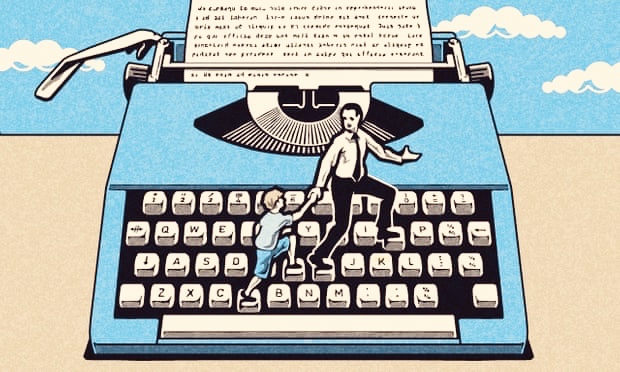Exactly six months ago, on the intervening night of June 15-16 this year, the lives of 20 Indian soldiers ended—literally at the hands of the Chinese in the heights of Ladakh.
For several weeks, large sections of mainstream media were in denial, dishing out the sarkari view that there was nothing abnormal on the border. But the high casualties made it impossible to ignore or hide the reality any more—that the dragon had seized the COVID moment.
Thereafter, it became clear that India had lost the largest tract of land since the 1962 war, nearly the size of the National Capital Region of Delhi. And that the Line of Actual Control had been shifted and India was no longer in control of areas it earlier patrolled.
Such territorial and manpower losses under so-called “strongman” Narendra Modi, you would imagine, would fire up the Opposition and ignite the media to demand accountability of what is otherwise a national shame. An issue which dogged the Jawaharlal Nehru government in 1962.
But astonishingly the #Galwan issue—the deaths of soldiers, the seizure of territory, the capture of soldiers, the intelligence and military lapses, the lack of political accountability— has all but disappeared from the front pages.
Every now and then, everybody from the President to the Prime Minister remind the nation of the “befitting response” India has given, but the truth is only a few Chinese apps have vanished from cheap Chinese phones. The People’s Liberation Army (PLA) is still very much on what used to be Indian soil, even as talks drag on into the cold winter.
How did a story of such magnitude vanish? What is the role of the media in demanding answers from the government of the day? And how complicit are owners and Editors in covering up a nation shamed?
Sushant Singh, the former Army man who became a journalist and is now with the Centre for Policy Research (CPR), speaks on the issue in this podcast.
Sushant Singh covered the Chinese attack and the aftermath for The Indian Express, but he soon left the paper, a change of course which in itself offers a commentary on the state of the media.Had the media performed its role as the eyes and ears of the people, and held the government and the military to account, “probably such a scenario could have been averted and these lives could have been saved.”
******
Show Notes
# “Has government succeeded in completely burying the story: no. Has the government succeeded in keeping it off the front pages: yes.
# “There is a genuine fatigue with the story. There has been no access to the media to the actual front lines.
# “There is a complicity of very large sections of the media in many ways.
# “As an former Army officer, I felt for the loss of lives. As a journalist, I felt vindicated, very angry and very disappointed because, had the media played its role and held the government and the military to account, probably such a scenario could have been averted and these lives could have been saved.
# “The death of 20 soldiers made it impossible for the media to ignore a story they had downplayed for several weeks. Deaths are difficult to hide; military deaths are very difficult to hide.
# “June 15 broke the code of omertà which had been imposed on a large section of the media to not talk about it or to talk about it in a manner as if everything is going to be resolved soon and things are going to be all fine.
# “Initial reportage was exaggerated in its optimism about the situation and not considering the ground realities as they were happening at the line of actual control.
# “Media did not follow up on The Hindu report by Vijaita Singh that 1,000 sq km of Indian territory had been lost to the Chinese, a story which till date (December 15, 2020) has not been contradicted by any official source.
# “Only Bloomberg followed it up. It revealed that the Indian Army was stopped from patrolling 350 sq km by the Chinese, but even that story was not followed up by Indian media.
# “There was no reason to not cover these stories except to prevent an embarrassment to the government.
# “Clearly there is a reluctance in the media to put the government on the mat or to ask uncomfortable questions. Maybe because of the fear of reprisal, maybe because of the prevailing nationalist sentiment, maybe because the Army has been placed at such a high pedestal in recent years.
# “There have been no follow-up stories on the 10 soldiers, including three officers, taken captive by the Chinese and released after two days if not three. Compare this with the hype and hoopla that accompanied the capture and release by Pakistan of Wing Commander Abhinandan after the Ballot air strike. Why is it not investigated enough? Who are these people, what happened to them, what did they experience when they were in Chinese custody?
# “What happened during Kargil? A similar incursion by the Pakistani Army. Certain territory on the line of control was lost. And the government actually acknowledged that territory had been lost. It was a BJP government. They put up a plan. This is what the Army is going to do. This is how we are going to employ the Air Force. They revealed what the diplomatic initiative is going to be under Jaswant Singh. There used to be regular press briefings by government officials, Navtej Sarna and Bikram Singh, who later became Army chief. Ministers were available.
# “TV is more to blame. There are honourable exceptions in the newspapers: Ajay Banerjee of The Tribune, Ajai Shukla of Business Standard, Suhasini Haider and Dinaker Peri of The Hindu. But in TV, it is difficult to think of journalists who have put out stuff which would embarrass or question the government. The crisis is even deeper in Hindi newspapers and Hindi news channels.
# “Compare media coverage after Pulwama (before the 2019 elections) and Ladakh. Then the bodies were brought to Delhi and everybody paid homage. When these 20 jawans died their bodies never came to Delhi. PM acknowledged their deaths after at least 48 hours. It is very odd that soldiers who die against a much stronger, more powerful adversary like China get far lesser coverage and attention both from the government and then, accordingly, from the media. The government had sent the signal by not according the same priority that it had done in the case of Pulwama or Uri, where the coverage continued for days on end. I don’t know if the directions are in writing on WhatsApp groups, or conveyed implicitly and understood.
# “Prasar Bharati had a problem with PTI’s interview with the Chinese ambassador to India. If the Chinese ambassador is fair game, if he can put stuff on his website, if he can issue his monthly magazine which talks about what Indian soldiers have done in Galwan, or how the Indian Army is behaving and is not admonished, why is PTI being called “anti-national” for interviewing him and asking questions which is a very fair journalistic exercise? In any case, issuing certificates on nationalism, like online trolls, is not in Prasar Bharti’s mandate.
# “Bloomberg did a story on the severe shortage of winter gear for soldiers in Ladakh and that India had to borrow it with its logistics arrangement with the US, but the Indian media spun it around as an example of Indo-US ties.
# “Even Pakistan took foreign journalists to Balakot a month after the strike. But there has been no byline from grand zero Galwan even after six months.
# “Journalists are taken to the Pakistani border even where there is artillery shelling but they have not been taken to the current theatre of action even though no shots are being fired.”***
The veterans who unmasked the Chinese incursions
Stop showing satellite images, TV editors get a nudge
A well-travelled story that goes from Rediff to Washington Post
Press Club of India tears into attack on Press Trust of India







